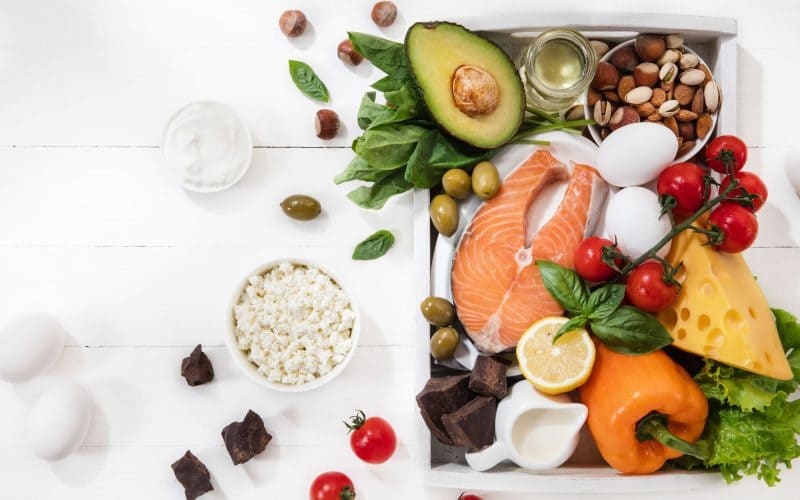Typically, diets in India are known to be unhealthy. The EAT-Lancet reference and the ICMR recommended diets outline the requirements for a healthy diet, and the Indian diet falls far away from the recommendations. The Indian diet is notorious for containing high amounts of carbohydrates and lesser amounts of other nutrients. This dietary pattern is one of the prime contributing reasons why the Indian population is nutrient-deficient and overweight. A well-balanced diet and a good health lifestyle choice is thus necessary to stay fit avoid health emergency.
What Is A Low-Carb Indian Diet?
A low carb Indian diet includes low carb Indian food items, reducing the intake of starchy Indian food with carbs, and emphasizing nutrient-rich foods, especially those high in protein, healthy fats, and vegetables.
Is Low Carb Indian Diet Effective?
The effectiveness of a low carb Indian diet can differ from person to person. A low carb Indian food palette’s effectiveness can depend on several factors. But yes, it has been proven to be generally effective if combined with adequate regular exercise.
Why should you limit your Carbohydrate intake?
The health benefits of restricting Indian food with carbs are numerous. Weight loss, blood sugar stabilization, improved lipid profiles, and metabolic health are all benefits of a low carb Indian diet.
Foods to include in Indian low-carb diet chart
Combining different varieties of low carb Indian food into your diet can help in creating a balanced and nutritious food palette. Let’s look into some low carb Indian food that you can include in your diet:
Almonds
A great snack option to include in your low carb Indian food diet, almonds are rich in healthy fats, vitamin E, magnesium and protein. Almonds help lower cholesterol and blood pressure levels, help in improving immune functioning. These nutritional nuts are also rich in calcium and phosphorus, thus promoting bone strength.
Curd
Curd has probiotics, making it beneficial for your gut health. Flavored curd contains high sugar, meaning more carbs. So plain, unsweetened curd can be an addition to your diet. Greek yogurt has high protein and low sugar content can also be an excellent option for your low carb Indian diet.
Mung dal
Mung dal is a good source of plant-based protein and contains high fiber, vitamin E, K and C. Include this in your low carb Indian food palette in moderation. It is rich in dietary fiber. This light nutritious food significantly helps reduce cholesterol levels. It also has protein in abundance, a boon for vegetarians.
Milk
Milk contains lactose, a natural sugar, so it is higher in carbs. Whole milk can be consumed in limited amounts. There are also other alternatives like flax milk, hemp milk, coconut milk and almond milk that contain 0-2 gms of carbs per cup serving.
Nuts and seeds
Nuts like macadamia, pecan and Brazil nuts have low-carb content and healthy fats. Some other nuts like walnuts and hazelnuts contain more carbs but they are also a good option for snacks. Seeds like flax, chia, hemp, sunflower and pumpkin are other snack options. You can also add these to various dishes.
Paneer/cottage cheese
Widely used in Indian cuisine, Paneer is a high-protein dairy product that you can include in your low carb Indian food diet. The high protein content makes paneer an excellent source of it for vegetarians.
Sprouts
Mung beans and alfalfa can be a powerpack nutritious choice for your diet as they are rich in fiber. Sprouts are mostly composed of water, so it is fat free.You can make your soups and salads healthier with the addition of sprouts.
Soybean
Rich in protein, vitamins, minerals, dietary fiber, and healthy fats, soybean is a plant-based food, perfect for vegans and vegetarians. You can add tofu, soy milk and whole soybeans in your healthy vegan recipes.
Tips for following an Indian low-carb diet chart
Go high on high-fiber foods
Basil seed drink, avocado, strawberries and raspberries are rich in fiber and can be made into delicious smoothies. High fiber foods help in digestion. So, these smoothies can be a perfect breakfast option. Broccoli, beans, brussel sprouts, and whole grains are other foods that can be incorporated into your low carb meals.
Do regular exercises
A combination of diet and exercise is the key to making the diet functional. You can do some simple stretches in the form of yoga or pilates. Jog for a distance, walk your pet, or do some intense weight and strength training. exercise, be it in any form, must be a habitual practice if you want to live a healthier life.
Choose complex carbs
Complex carbs are processed slowly, so there is a slower release of glucose into the bloodstream. Brown rice, quinoa, chickpeas, sweet potatoes, oatmeal, and corn are some complex carbs that can be added to your diet.
Increase protein intake
Protein is an essential component of a low carb Indian food palette as it is helpful for blood sugar levels. It helps in feeling full after a meal. You can consume egg, chicken, fish and other sea food for protein. If you are a vegetarian, legumes like chickpeas and lentils, paneer, tofu can be a good source of protein to include in your low carb Indian food list.
Conclusion
Past studies have revealed the high level of sugars and refined carbs in the Indian diet. In order to make a conscious difference in your health and lifestyle, you must avoid the consumption of sweet items and processed foods. A balanced diet equals a colorful food palette with a variety of foods. However, it is important to eat a balanced diet, according to the needs of your body, in moderation. Remember the dietary goals you have set for yourself and stay consistent.


